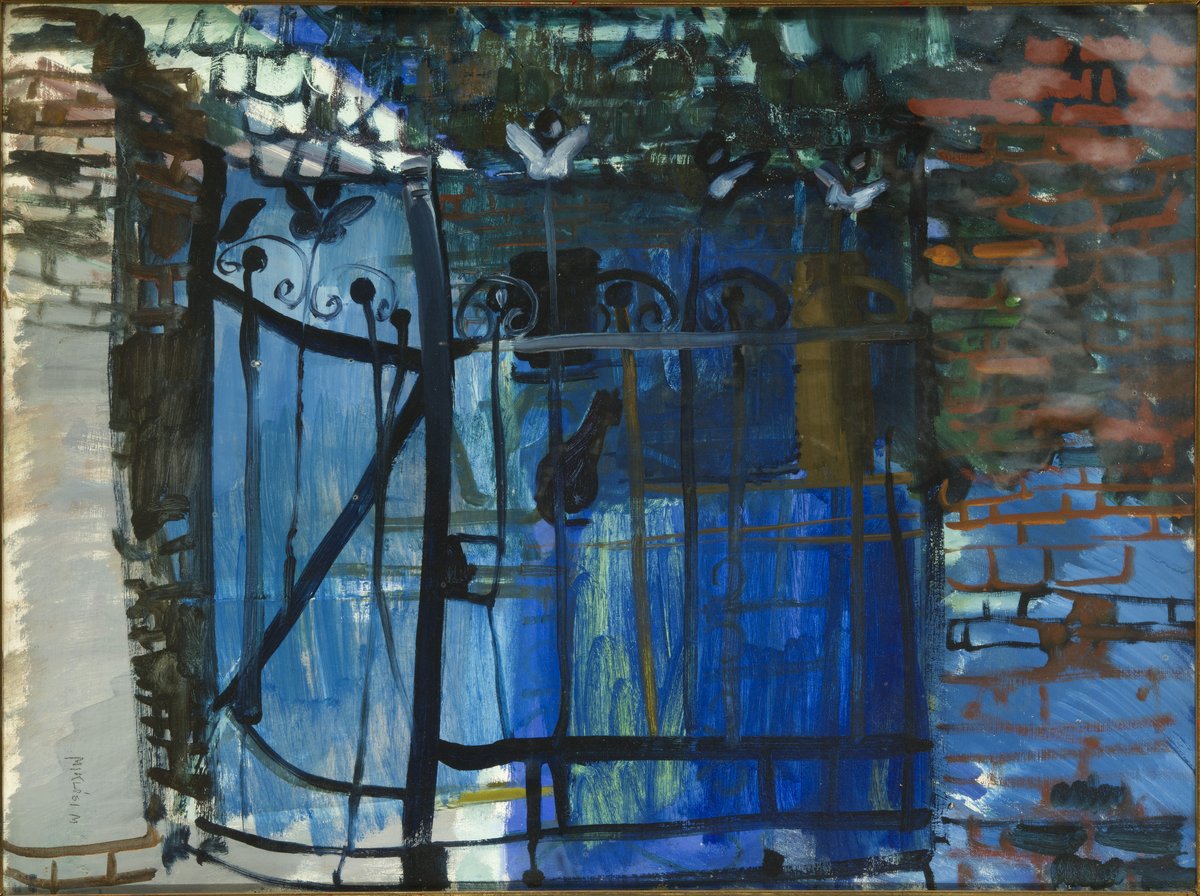
Fence Gate (Blue Gate)
Contemporary Collection
| Artist | |
|---|---|
| Date | 1996/2000 |
| Object type | photograph |
| Medium, technique | photographic paper, Ilfochrome |
| Dimensions | 508 × 608 mm |
| Inventory number | MM2002.6 |
| Collection | Contemporary Collection |
| On view | This artwork is not on display |
The works of Attila Csörgő straddle the boundary between art and science, and his mobile structures combine the spatial vision of a sculptor with the technical ingenuity of an engineer. Despite their playful nature, his kinetic and optical experiments provide potential solutions for solving complex problems of mathematics, physics, or descriptive geometry. His constructions are retrograde, and aesthetic pleasure is not his objective; his main concern is for the thought and effort he has put into his work over many months to be manifested in his objects. Csörgő does not aim to achieve the ideal of beauty seen in the kind of kinetic sculpture that treats machines as cult objects, but concentrates on using the functional minimum to build an operating structure that presents a given geometric idea or physical phenomenon. In consequence of this, his objects often have a cobbled together, DIY appearance. In many of his works he investigates the connections between plane and space, and the characteristics of space and time, or form and process, such as movement and light. Hemisphere , which was exhibited at the 1999 Venice Biennale, is an example of his minimally functioning objects. When set in motion, it produces a spiral of light which, according to the artist’s own description, “is created by two mutually synchronised rotating motions, or in other words, by circular motion rotated around an axis. The speed of the two rotating motions is not the same, and the difference in speed determines the density of the spiral describing the hemisphere.” When the light bulbs fitted at the end of the two metal rods are in motion, they rest in planes that intersect at a 45° angle. The spiral of light flows as a dome, or hemisphere, over the DIY construction. To the viewer in real time, however, this spiral hemisphere appears only as a trail of moving light; to see the hemisphere in its entirety, the spiral in motion must be recorded using long exposure photography, the results of which are documented in the photo (Hemisphere V). The Hungarian National Gallery has the object (MM.2000.1) and more prints taken by the artist of a similar object (MM.2002.2―6).
Mária Madár
This record is subject to revision due to ongoing research.